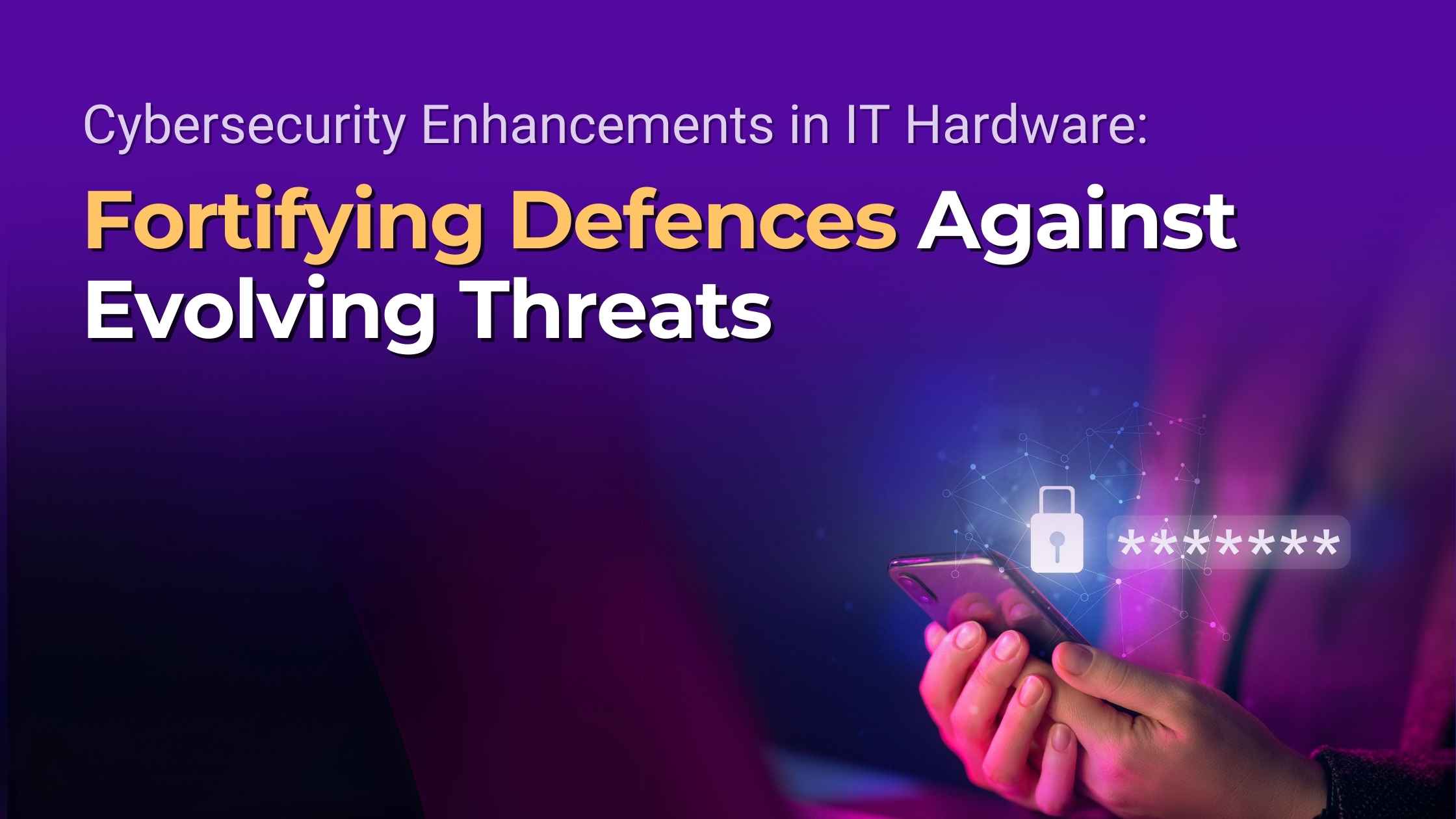As cybersecurity threats become increasingly sophisticated, securing IT hardware has emerged as a critical component of robust cyber defences. Traditionally, cybersecurity focused on software, but it is now recognised that vulnerabilities at the hardware level can have severe consequences, allowing attackers to undermine even the most advanced software protections. This blog explores recent advancements in IT hardware security, including secure boot processes and advanced encryption techniques, and examines how these improvements are complemented by Microsoft Dynamics to enhance overall cybersecurity.
The Rising Importance of Hardware Security
Hardware is the foundation of any IT system. A compromised hardware component can undermine the entire security architecture, rendering software-based protections ineffective. Attackers have begun targeting hardware due to its often overlooked status in traditional cybersecurity strategies. Unlike software, which can be updated and patched regularly, hardware changes infrequently, making it a potentially persistent target for exploitation.
The impact of a hardware breach can be profound. Once attackers gain control over hardware, they can bypass most software security measures, compromising data integrity, intercepting communications, or even disabling systems. This reality has driven significant innovations in hardware security to safeguard against these risks.
The impact of a hardware breach can be profound. Once attackers gain control over hardware, they can bypass most software security measures, compromising data integrity, intercepting communications, or even disabling systems. This reality has driven significant innovations in hardware security to safeguard against these risks.
Secure Boot Processes: The First Line of Defence
Secure boot is a pivotal advancement in hardware security. It ensures that a device only runs software that is verified and trusted by the original equipment manufacturer (OEM). This process utilises cryptographic signatures to confirm the authenticity and integrity of the software before it is executed.
The secure boot process begins with the system firmware, which checks the signatures of the operating system (OS) and other components before they are loaded. If the signatures do not match, the system will refuse to boot, thereby preventing unauthorised or malicious software from executing.
Secure boot is essential for defending against attacks targeting the boot process, such as rootkits, which can compromise a system even before the OS is loaded. By incorporating secure boot mechanisms, organisations can protect their systems from foundational attacks, bolstering overall security.
The secure boot process begins with the system firmware, which checks the signatures of the operating system (OS) and other components before they are loaded. If the signatures do not match, the system will refuse to boot, thereby preventing unauthorised or malicious software from executing.
Secure boot is essential for defending against attacks targeting the boot process, such as rootkits, which can compromise a system even before the OS is loaded. By incorporating secure boot mechanisms, organisations can protect their systems from foundational attacks, bolstering overall security.
Advanced Encryption Techniques: Protecting Data at Rest and in Transit

Encryption remains a cornerstone of cybersecurity, and advancements in hardware-based encryption are setting new standards for data protection. Modern IT hardware increasingly integrates dedicated encryption engines that deliver robust security while maintaining high performance.
Hardware-based encryption provides several advantages over software-based methods. It is faster and less resource-intensive because encryption tasks are managed by specialised hardware components. This efficiency is crucial in performance-critical environments, such as data centres or high-frequency trading platforms.
Additionally, hardware encryption is less susceptible to certain types of attacks. For instance, it is more resistant to exploits targeting encryption keys stored in memory. By securing encryption keys within hardware modules, such as Trusted Platform Modules (TPMs), the risk of key theft or tampering is significantly reduced.
Hardware-based encryption provides several advantages over software-based methods. It is faster and less resource-intensive because encryption tasks are managed by specialised hardware components. This efficiency is crucial in performance-critical environments, such as data centres or high-frequency trading platforms.
Additionally, hardware encryption is less susceptible to certain types of attacks. For instance, it is more resistant to exploits targeting encryption keys stored in memory. By securing encryption keys within hardware modules, such as Trusted Platform Modules (TPMs), the risk of key theft or tampering is significantly reduced.
The Role of Trusted Platform Modules (TPMs)
Trusted Platform Modules (TPMs) are integral to modern hardware security. These dedicated microcontrollers enhance hardware protection by offering a secure environment for cryptographic operations. TPMs safeguard sensitive information and ensure that security functions are executed within a tamper-resistant environment.
TPMs support secure boot, hardware-based encryption, and other critical security features. They also integrate seamlessly with solutions like Microsoft Dynamics, enhancing overall system security.
TPMs support secure boot, hardware-based encryption, and other critical security features. They also integrate seamlessly with solutions like Microsoft Dynamics, enhancing overall system security.
Microsoft Dynamics: Enhancing Cybersecurity Through Integration
Microsoft Dynamics is a suite of enterprise resource planning (ERP) and customer relationship management (CRM) solutions that benefit from these hardware security advancements. By integrating Microsoft Dynamics with secure hardware components, organisations can bolster their cybersecurity posture in several ways:
- Secure Data Management: Microsoft Dynamics solutions can leverage hardware-based encryption to protect sensitive business data both at rest and in transit. This integration ensures that data handled by Dynamics is safeguarded against unauthorised access and breaches.
- Enhanced Authentication: TPMs can be used to secure authentication processes within Microsoft Dynamics. By requiring hardware-based authentication, organisations can prevent unauthorised access to critical systems and data.
- Improved Compliance: Microsoft Dynamics, combined with secure hardware, helps organisations meet regulatory compliance requirements. The integration ensures that data protection standards are upheld, reducing the risk of non-compliance.
- Increased Trustworthiness: The combination of Microsoft Dynamics and secure hardware components reinforces the trustworthiness of enterprise systems. Organisations can confidently manage their operations, knowing that their IT infrastructure is fortified against evolving cybersecurity threats.
Conclusion
As cybersecurity threats continue to evolve, securing IT hardware has become a vital aspect of overall security strategies. Advancements such as secure boot processes and hardware-based encryption are essential in protecting systems from foundational attacks. When paired with solutions like Microsoft Dynamics, these hardware security enhancements provide a comprehensive approach to safeguarding data and systems.
By focusing on both hardware and software security, organisations can build resilient IT infrastructures capable of withstanding the growing complexity of cyber threats. As technology progresses, ongoing innovation and integration will be key to maintaining robust cybersecurity defences.




